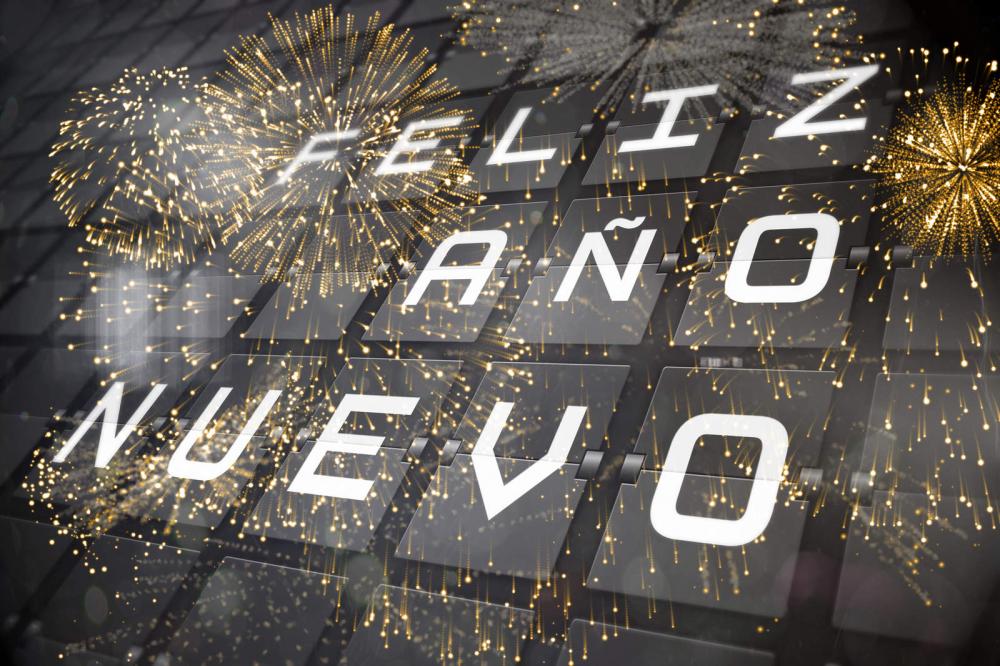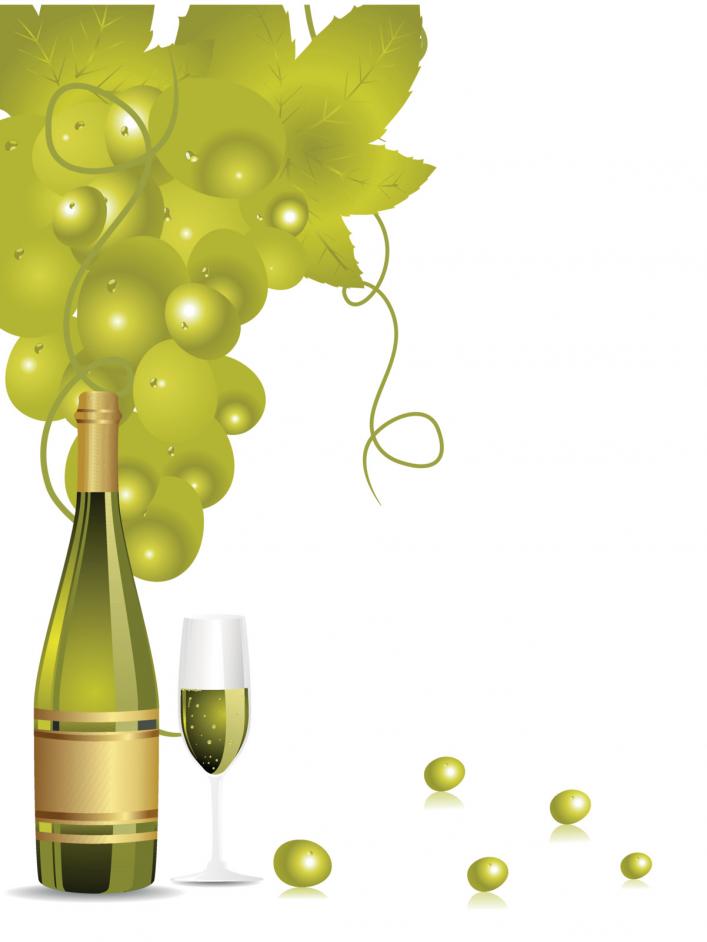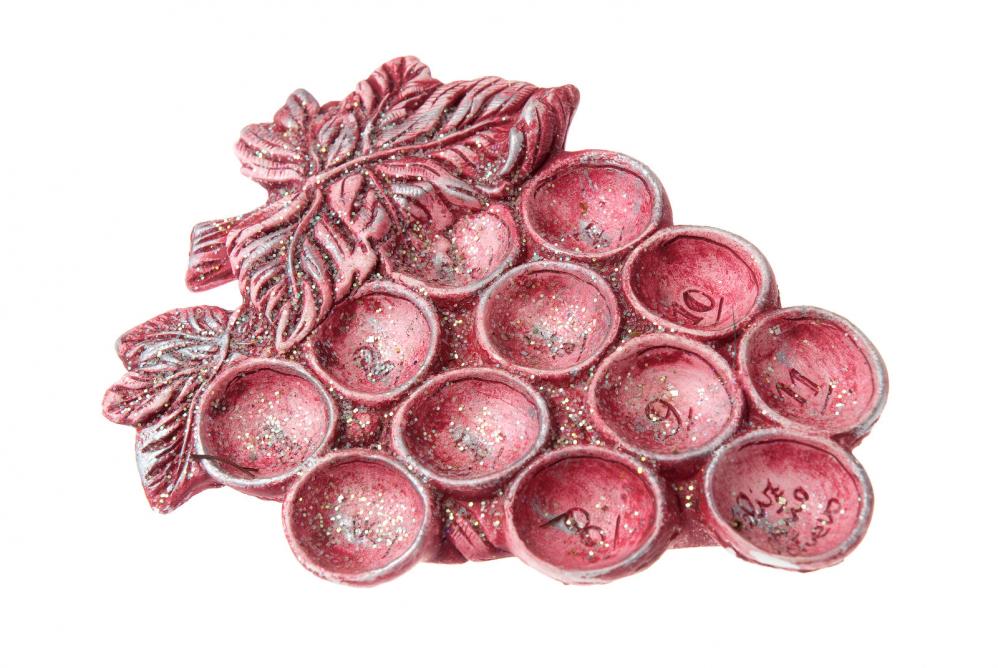Spanish Nochevieja: Grapes, recalentado et al in Spain, Mexico, Cuba
 Spanish (or Castilian) is the official language in Spain, Equatorial Guinea, and 19 other countries in the Americas.
Spanish (or Castilian) is the official language in Spain, Equatorial Guinea, and 19 other countries in the Americas.
It is estimated that about 400 million people speak Spanish as their native language and another 70 million as their second language.
This makes Spanish the third most spoken language in the world after Mandarin and English (Wikipedia). For a Wikipedia list of countries where Spanish is an official language, click HERE.
While most of the"Nochevieja" (old night) traditions also apply to the other Spanish-speaking countries, we'll mainly focus on Spain, Mexico, and Cuba.
Spain
New Year celebration in Spain starts with a family dinner, which often takes place in a restaurant that also offers live music. Towards midnight, many Spaniards go into the streets and to public squares to meet with friends and clink glasses to ring in the new year.
New Year's celebrations are lively, with mostly private fireworks and all kinds of noisemakers. In the town hall, sparkling wine and grapes for good luck are distributed. In Madrid, people flock to Puerta del Sol for the city's big communal street party. In Barcelona, Placa Catalunya in the heart of the city, is the place to be.
 Grapes
Grapes
But no matter where they live, Spanish people share the custom of the twelve luck-bringing grapes: at each of the twelve strikes of the midnight clock (the Puerta del Sol clock is televised), you eat one grape and make a wish. At strike 12 all grapes must be gone or else you risk getting bad luck.
The strikes of the town hall clock are 3 seconds apart, so the official countdown starts 36 seconds before the hour. Throughout the country, everyone can watch the countdown on television. It is said that the custom of the 12 grapes goes back to 1909. In that year the grape harvest was overly plentiful and someone had the idea to use up the excess grapes in this way.
In that year the grape harvest was overly plentiful and someone had the idea to use up the excess grapes in this way.
I just came across this post which traces the origin of the custom back to 1882 and the mayor of Madrid. (As so often happens, taxes may have had some unintended consequences to create the "grapes-at-midnight" tradition...) There are even special 12-grape holders as shown in the picture.
Red Underwear
Spaniards also believe that wearing red underwear on the last day of the old and the first day of the new year brings the wearer luck, health, and love. Importantly, the undergarment should have been given to you by somebody else.
I've read that this custom goes back to the Middle Ages when people did not wear red garments. The color of blood was associated with the devil, witchcraft, and evil forces. Women (of pleasure?) who wore red underwear on New Year's Eve, however, were said to find love the following year. They would be lucky in their relationships, attract wealthy men, get married, etc.
(Recently, I learned that the Chinese also believe in the magic powers of the red color. Red underwear is one of the most popular gifts that sweethearts exchange around the Chinese New Year. In 2016, it falls on February 8, when the Year of the Monkey begins. So, just maybe, it was Marco Polo, who brought this superstition to the west around the 1300s...)
Mexico
In Mexico, a family dinner, either at home or at a special restaurant is at the center of New Year's celebrations. Tradition has it that the meal should start with a bowl of lentils, a symbolic promise of wealth and prosperity.
Grapes and Red (& Yellow) Underwear
The preferred drink is often tequila. Shortly before midnight grapes are handed out for the traditional luck-bringing ritual. As in Spain, you should eat a grape and make a wish at each of the twelve strikes of the clock at midnight. The grape tradition seems to have migrated to most other Spanish-speaking countries as well.
Also, in Mexico there is a slight "refinement" from Spain's tradition. Mexicans have to choose what is more important to them. Wearing red underwear lets the owner be lucky in love, wearing yellow underwear makes the owner wealthy in the New Year.
Mayan & Aztec Traditions
This post by Angelica Galicia, Celebrating New Year's Eve in Mexico, also lists a number of other end-of-the-year traditions dating back to the pre-Hispanic times. (And, if you'd like to practice your Spanish, you can click on the "Spanish" link, right on top of the text.)
As Angelica explains:
"...Most assuredly, the custom called el 'recalentado' (the 're-heated') is a long-standing tradition rooted throughout Mexico, quite in keeping with the festive and generous character of the Mexicans and also with the abundant and delicious national gastronomy. It consists simply of sharing the next morning what was left over from the dinner with either the same or other guests. It is said that the recalentado is even more delicious than the dinner itself …"
Cuba
Cubans also continue with the Spanish tradition of eating twelve grapes before midnight. But they added others that are to give the New Year a fresh start: The Año Viejo doll - burning of a doll, is meant to help forget (burn!) the bad things that happened in the past. And, throwing water on the street (watch out!), similarly, gets rid of bad memories and/or drives out bad spirits.
Many Spanish-speaking countries and communities have added other traditions. However, the grape-eating ritual before midnight seems to be quite universal.
But wherever you are, from midnight on, it's time for toasts, hugs, and well-wishing, champagne, cider (Cuba) or other libations, and often noisemakers and fireworks!
